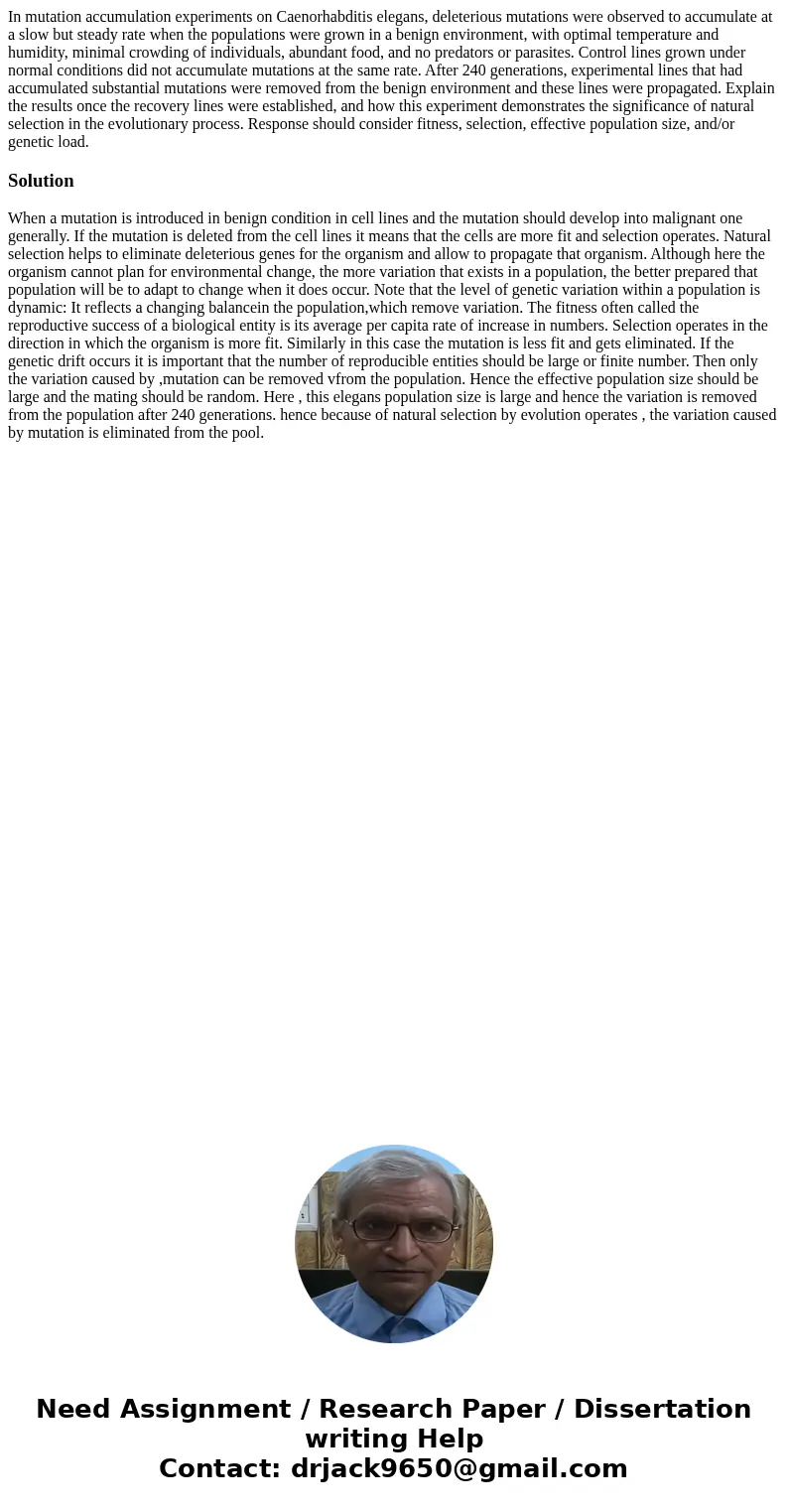In mutation accumulation experiments on Caenorhabditis elega
In mutation accumulation experiments on Caenorhabditis elegans, deleterious mutations were observed to accumulate at a slow but steady rate when the populations were grown in a benign environment, with optimal temperature and humidity, minimal crowding of individuals, abundant food, and no predators or parasites. Control lines grown under normal conditions did not accumulate mutations at the same rate. After 240 generations, experimental lines that had accumulated substantial mutations were removed from the benign environment and these lines were propagated. Explain the results once the recovery lines were established, and how this experiment demonstrates the significance of natural selection in the evolutionary process. Response should consider fitness, selection, effective population size, and/or genetic load.
Solution
When a mutation is introduced in benign condition in cell lines and the mutation should develop into malignant one generally. If the mutation is deleted from the cell lines it means that the cells are more fit and selection operates. Natural selection helps to eliminate deleterious genes for the organism and allow to propagate that organism. Although here the organism cannot plan for environmental change, the more variation that exists in a population, the better prepared that population will be to adapt to change when it does occur. Note that the level of genetic variation within a population is dynamic: It reflects a changing balancein the population,which remove variation. The fitness often called the reproductive success of a biological entity is its average per capita rate of increase in numbers. Selection operates in the direction in which the organism is more fit. Similarly in this case the mutation is less fit and gets eliminated. If the genetic drift occurs it is important that the number of reproducible entities should be large or finite number. Then only the variation caused by ,mutation can be removed vfrom the population. Hence the effective population size should be large and the mating should be random. Here , this elegans population size is large and hence the variation is removed from the population after 240 generations. hence because of natural selection by evolution operates , the variation caused by mutation is eliminated from the pool.
 Homework Sourse
Homework Sourse